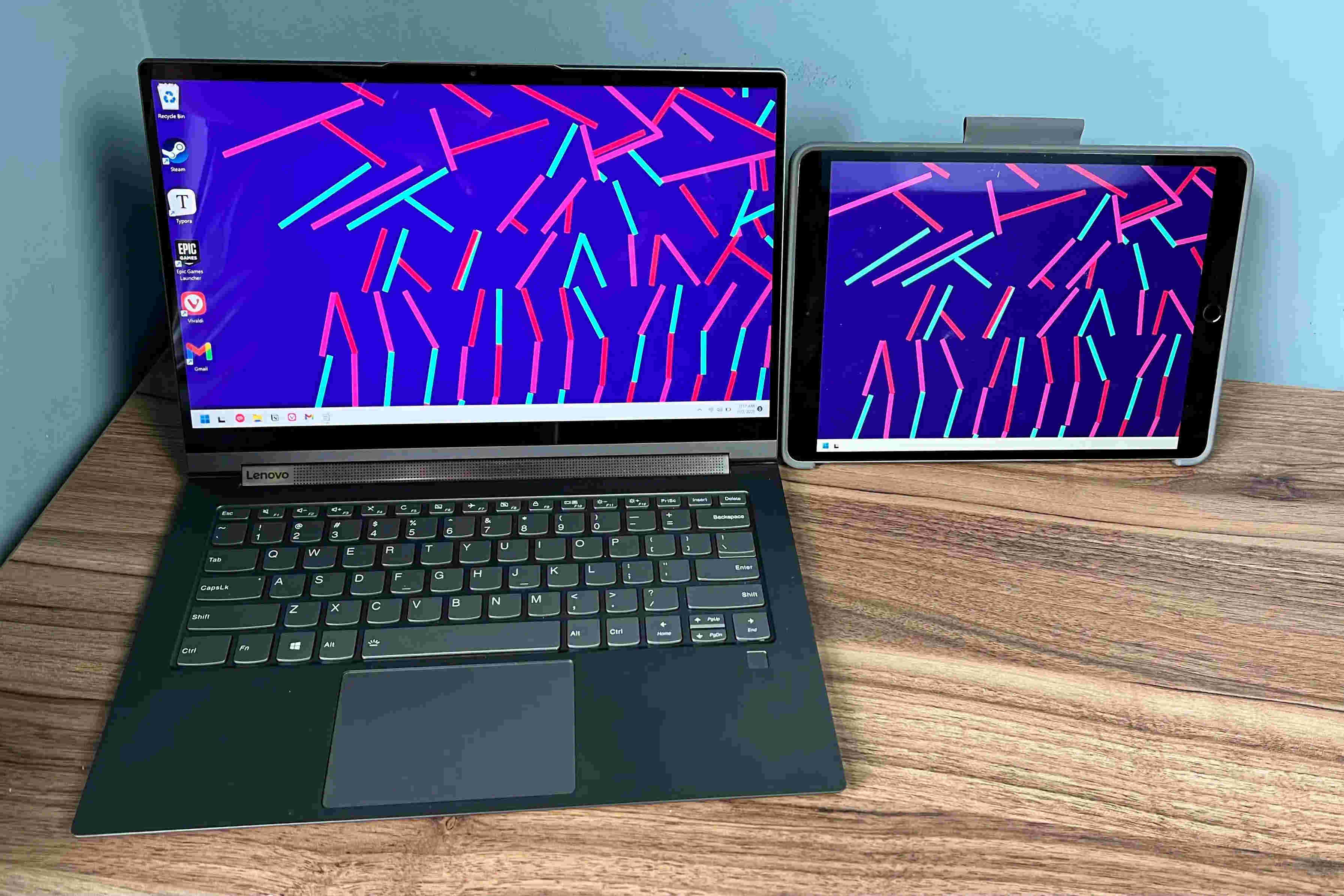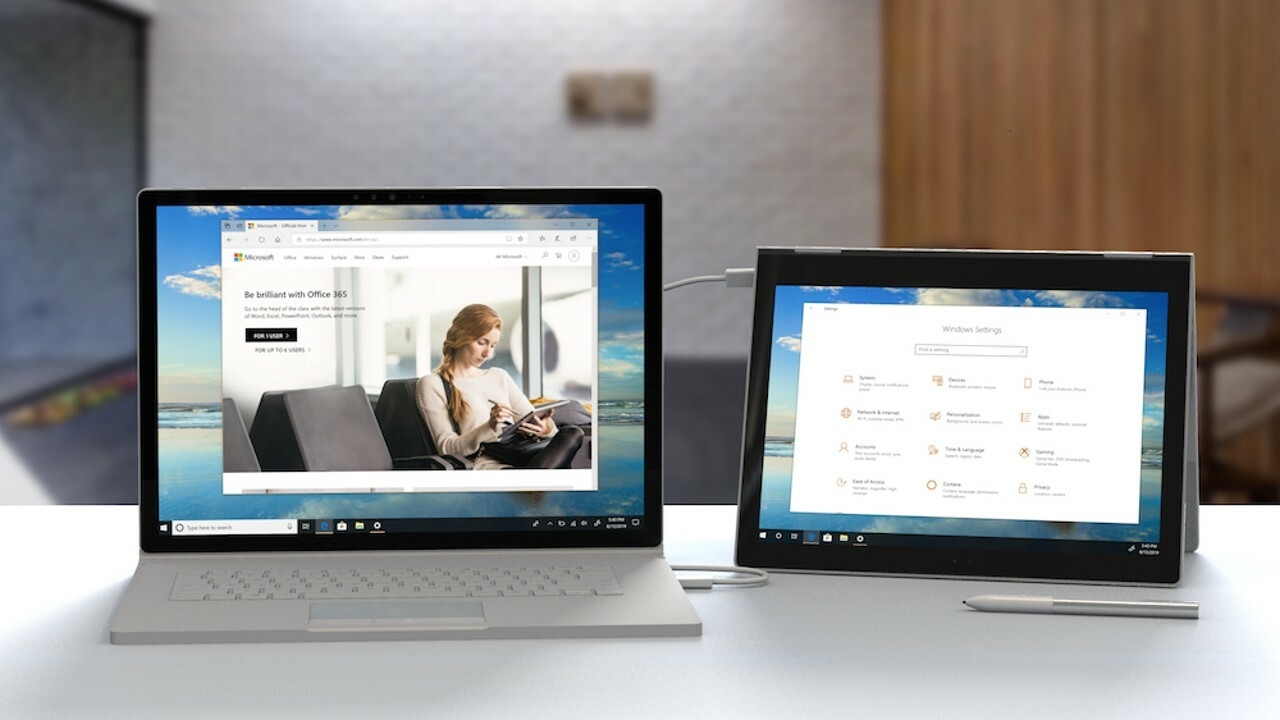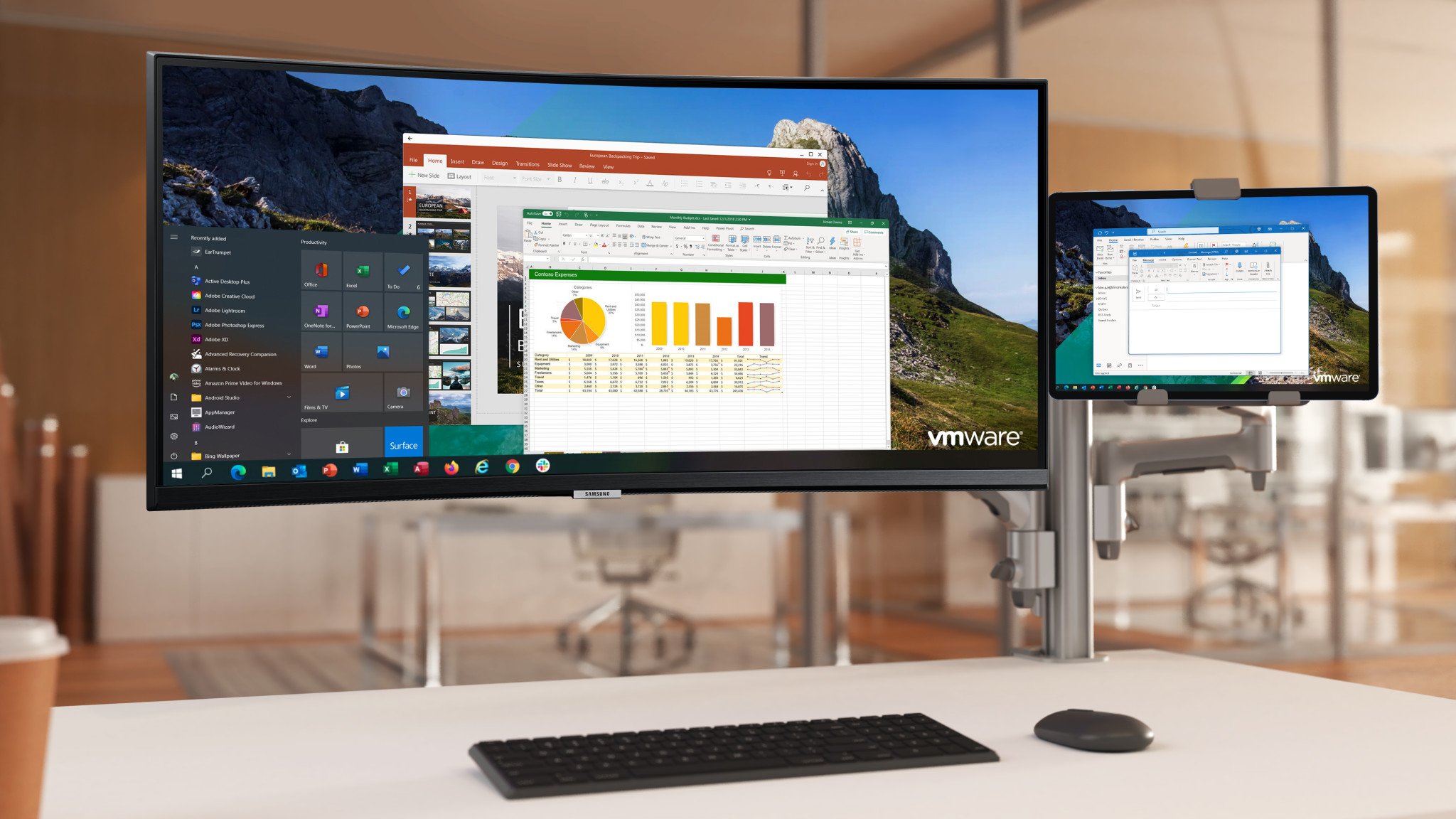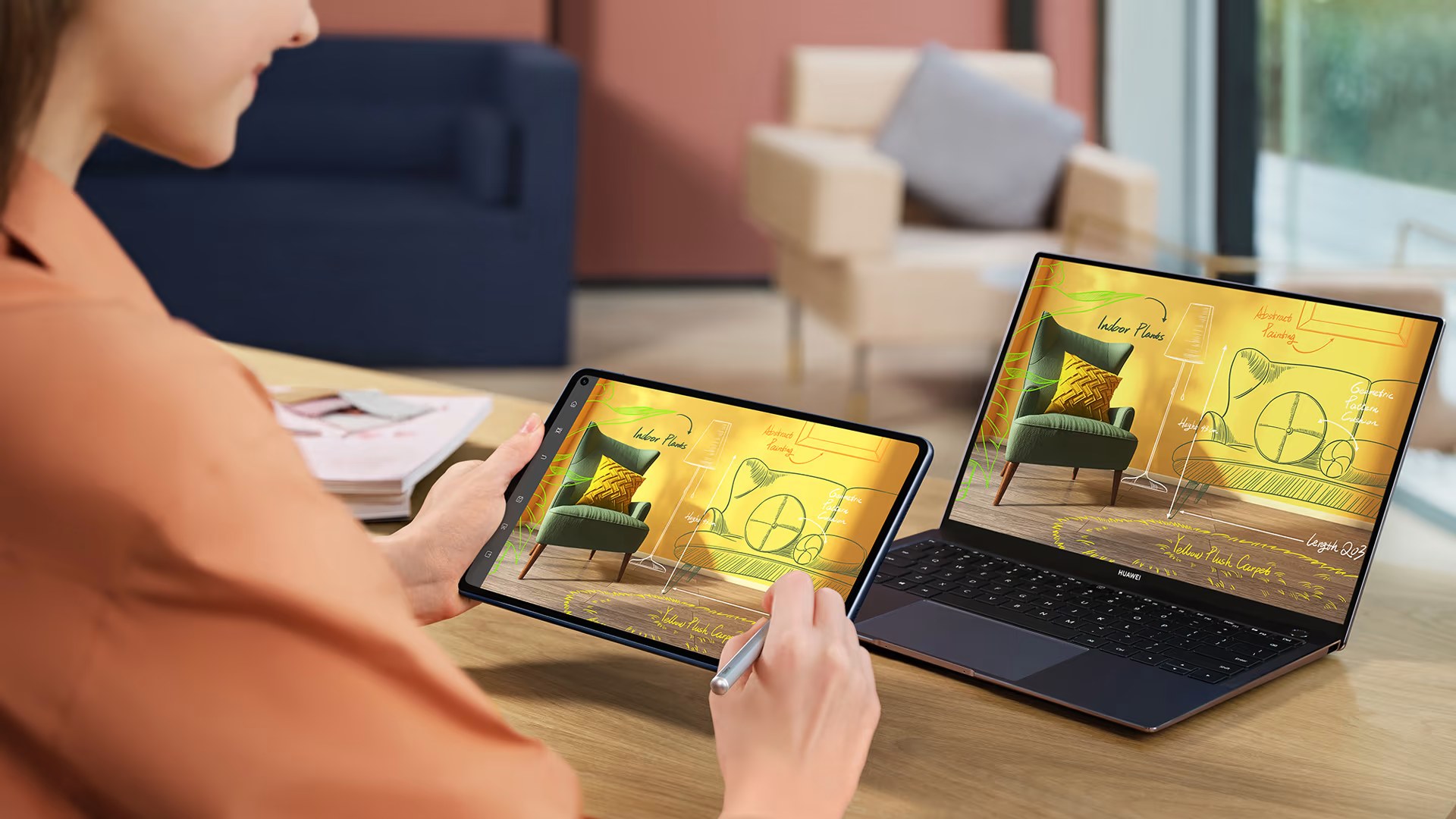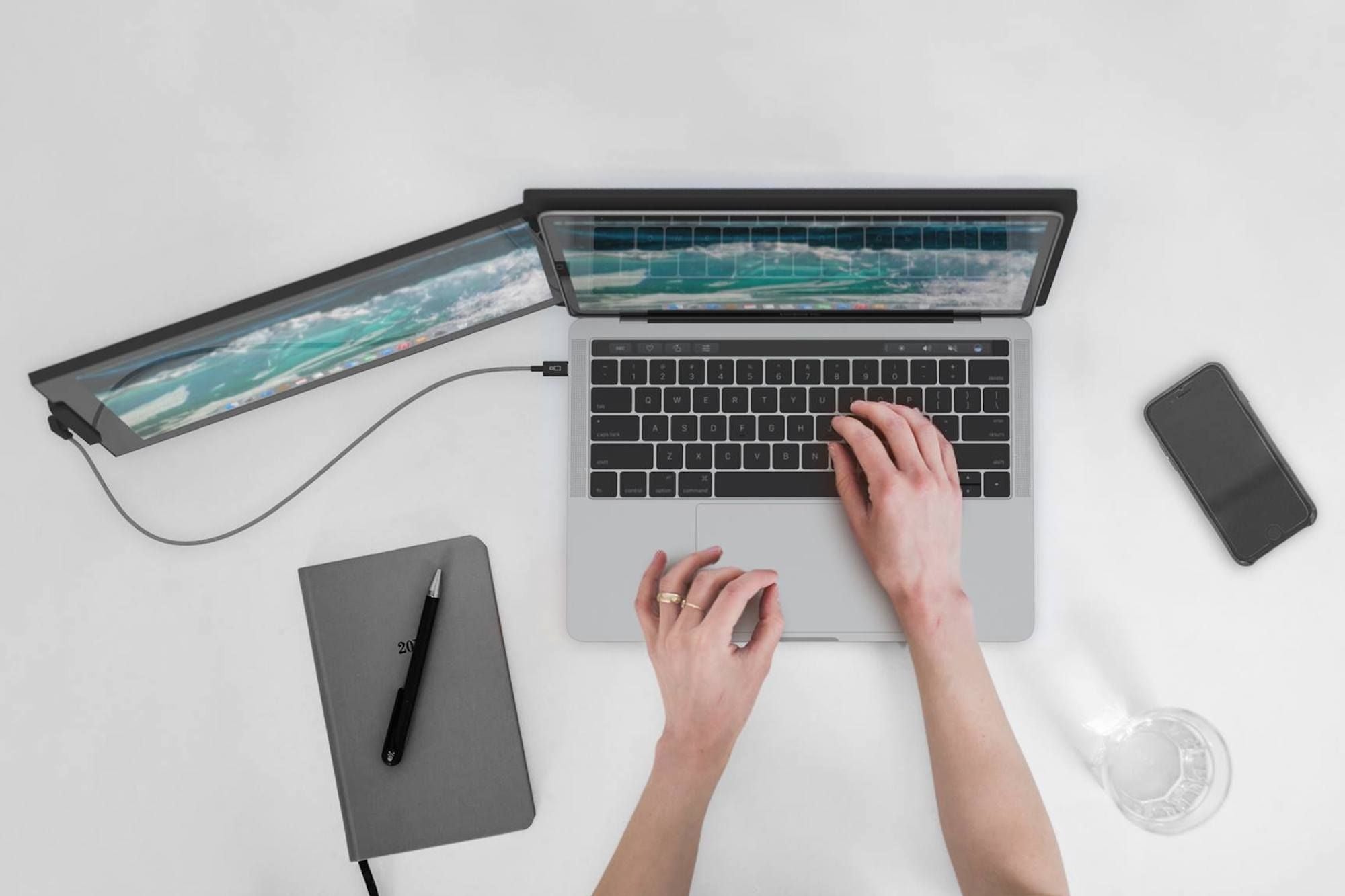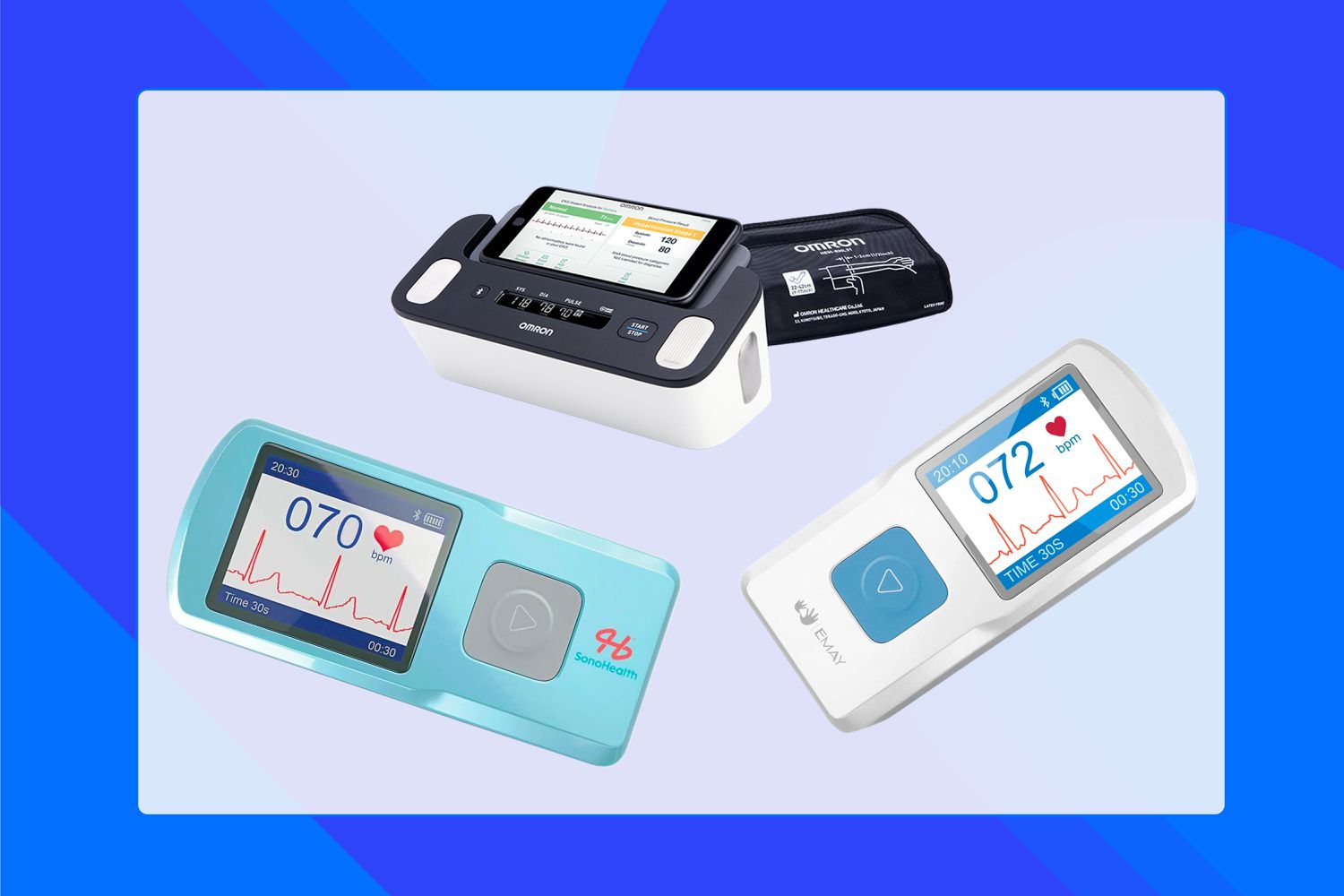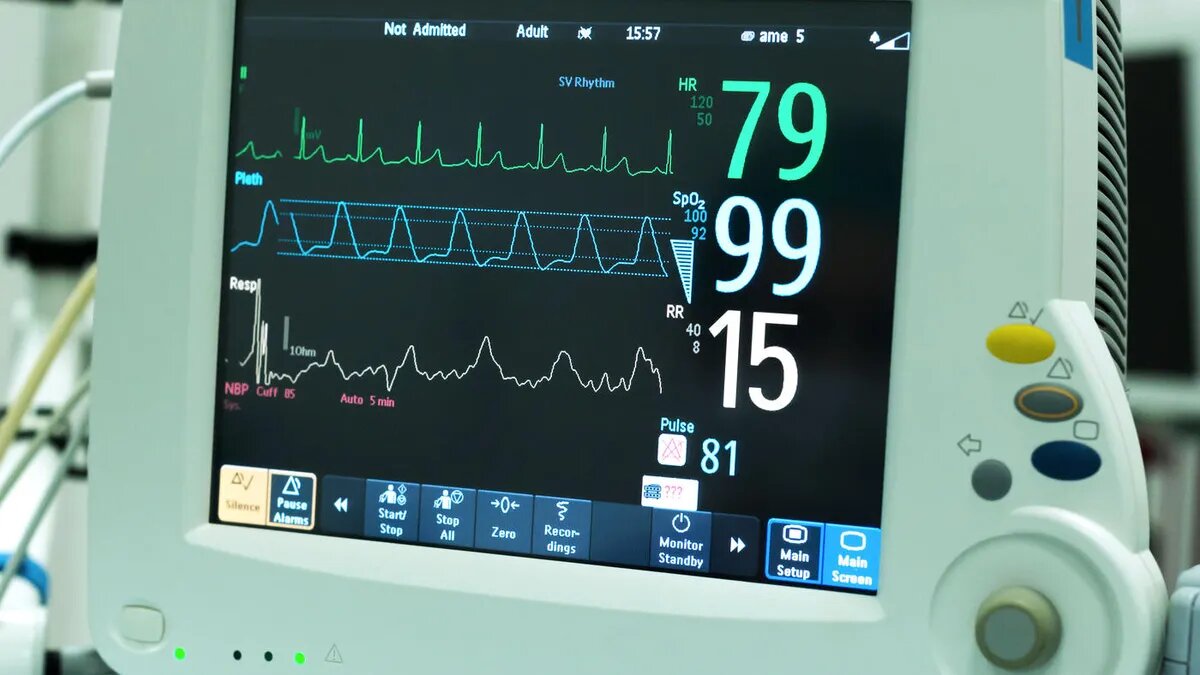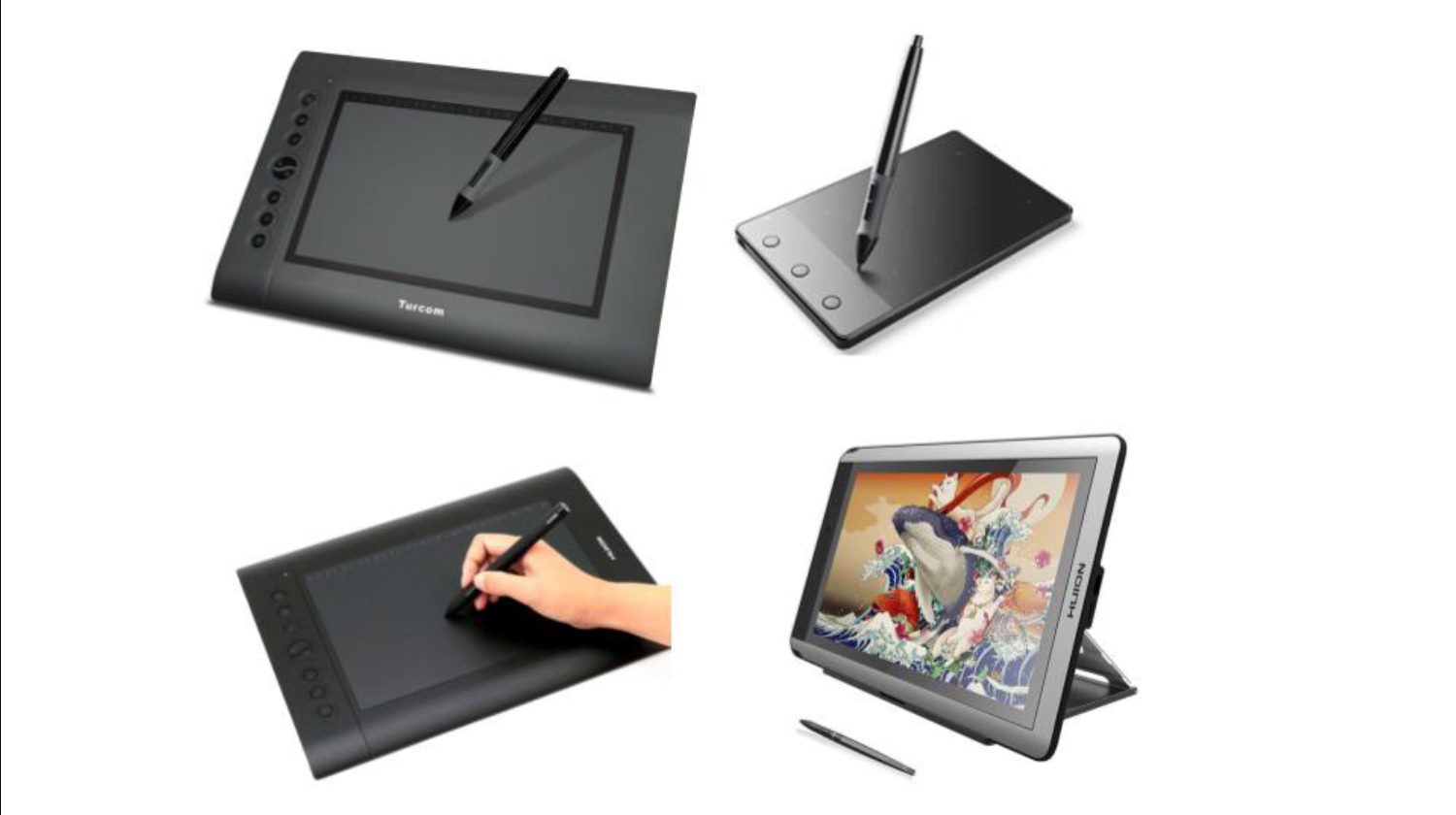Introduction
Welcome to the world of multitasking efficiency! If you’ve ever wished for an extra screen to extend your desktop space, look no further than your trusty tablet. With the advent of advanced technology, it’s now possible to use your tablet as a second monitor, providing you with more screen real estate and the ability to work on multiple tasks simultaneously.
Whether you’re a busy professional, a gamer wanting a dual-screen setup, or simply someone who wants to maximize productivity, using a tablet as a second monitor can greatly enhance your digital experience. Imagine having your primary work applications on your main display while using your tablet monitor to keep an eye on emails, social media feeds, or reference materials – all conveniently within your field of vision.
The benefits of using a tablet as a second monitor extend beyond just the convenience of extra screen space. It allows for a streamlined workflow, increased productivity, and the ability to efficiently multitask in a way that wasn’t previously possible with just a single monitor.
However, before diving into the process, it’s important to ensure your tablet is compatible with the necessary requirements. Depending on your tablet’s model and operating system, there are different methods available to set up your tablet as a second monitor. Additionally, you’ll need to adjust the display settings to optimize the viewing experience and make the most out of your dual-screen setup.
In this article, we’ll explore the different ways to transform your tablet into a second monitor and provide you with step-by-step instructions to get started. Whether you have an iPad, Android tablet, or even a Windows-based tablet, we’ve got you covered. So, let’s dive in and discover how to unlock the full potential of your tablet as a second monitor!
Benefits of Using a Tablet as a Second Monitor
Using a tablet as a second monitor can revolutionize the way you work and provide numerous benefits for both productivity and convenience. Here are some of the key advantages:
- Expanded Screen Real Estate: With a tablet as a second monitor, you effectively double your available screen space. This allows you to have multiple applications and windows open side by side, improving workflow and making it easier to reference information without constantly switching between tabs or windows.
- Enhanced Multitasking: A second monitor provides the perfect opportunity to multitask efficiently. You can keep relevant documents, reference materials, or communication applications open on your tablet while focusing on your primary tasks on the main screen. This allows for seamless simultaneous work, improving overall productivity.
- Portability: Tablets are lightweight and portable devices, making them ideal for individuals who are always on the go. By utilizing your tablet as a second monitor, you can easily carry your extended workspace wherever you travel, eliminating the need for bulky additional displays.
- Cost Savings: Investing in an additional physical monitor can be a costly endeavor, especially if you’re on a tight budget. Using a tablet as a second monitor allows you to repurpose an existing device and save on the expenses associated with purchasing a new display.
- Flexible Configuration: The ability to use a tablet as a second monitor offers flexibility in configuring your workspace. You can position your tablet in portrait or landscape mode, depending on your preference and the tasks at hand. This adaptability ensures a comfortable and customized working environment.
- Improved Collaboration: If you work in a collaborative environment, having a second monitor can greatly enhance teamwork and communication. You can easily share your screen with coworkers, display presentations, or annotate documents while keeping your primary work on your main screen.
- Gaming Advantage: For gaming enthusiasts, using a tablet as a second monitor can revolutionize gameplay. You can keep track of game-related information, chat with teammates, or watch tutorials without interrupting your gaming experience on the main screen.
These are just a few of the benefits of using a tablet as a second monitor. Whether you’re a professional, student, or gamer, the advantages of having an extended workspace are undeniable. Now that we’ve explored the advantages, let’s move on to compatibility and requirements.
Compatibility and Requirements
An important aspect to consider before using your tablet as a second monitor is its compatibility and the requirements for the setup. While the process may vary depending on your tablet’s model and operating system, here are the general considerations:
- Tablet Model: Not all tablets can be used as second monitors. Before proceeding, ensure that your tablet supports the necessary functionality. Tablets from reputable manufacturers such as Apple, Samsung, Microsoft, and Google are more likely to have the required capabilities.
- Operating System: The compatibility also depends on the operating system of your tablet. Both iOS and Android devices offer options for using a tablet as a second monitor, although the specific methods may differ.
- Software Support: Check if there is software or applications available that facilitate the use of your tablet as a second monitor. Some tablets may require you to download and install specific apps from their respective app stores.
- Wireless Display Support: To use your tablet as a second monitor wirelessly, your tablet and the device you’re connecting it to should support wireless display technology. This is commonly available on newer tablets and computers that have built-in Wi-Fi with Miracast or AirPlay compatibility.
- USB Connection: If wireless display is not possible, your tablet and computer should have USB connectivity options. This allows you to connect your tablet to your computer using a USB cable, typically with the USB Type-C or Micro-USB port.
- Operating System Requirements: Ensure that your tablet and computer are running on compatible operating systems. This includes checking the required versions of iOS, Android, or Windows, depending on your devices.
- Hardware Considerations: In terms of hardware, make sure you have the necessary cables and adapters to connect your tablet to your computer. For wireless display, a stable Wi-Fi connection is also essential.
It’s important to note that compatibility and requirements may vary depending on the specific methods or apps you choose to use. Always refer to the manufacturer’s instructions and support documentation for accurate and up-to-date information on compatibility and setup.
Now that you understand the compatibility and requirements, let’s explore the different methods to set up your tablet as a second monitor.
Setting Up Your Tablet as a Second Monitor
Setting up your tablet as a second monitor requires a few simple steps to ensure a seamless connection. Depending on your tablet’s capabilities and preferences, there are multiple methods you can use. Here are three common methods:
- Method 1: Using Wireless Display Technology: This method allows you to connect your tablet to your computer wirelessly. To begin, ensure that both your tablet and computer support wireless display technology, such as Miracast or AirPlay. On your tablet, enable screen mirroring or wireless display from the settings menu. On your computer, open the display settings and select the option to connect to a wireless display. Your tablet should appear as an available device. Choose it and follow the on-screen prompts to establish the connection. Once connected, you can configure the display settings to extend your desktop or mirror your existing screen.
- Method 2: Using Third-Party Apps: If your tablet or computer doesn’t natively support wireless display, you can use third-party apps to achieve the same functionality. There are several apps available for both iOS and Android devices that enable screen mirroring or second monitor support. Simply download and install a reliable app from the respective app stores, follow the app’s instructions to connect your tablet to your computer, and configure the display settings as desired.
- Method 3: Using USB Connection: If wireless display or third-party apps are not feasible options, you can use a USB connection to set up your tablet as a second monitor. Connect your tablet to your computer using a USB cable that is compatible with both devices (such as USB Type-C or Micro-USB). Your tablet should be automatically detected as a second monitor by your computer. Go to the display settings on your computer, configure the display settings to extend or mirror your screen, and adjust the position or orientation of the tablet display as needed.
It’s important to note that the specific steps and options may vary depending on the tablet and computer models you are using, as well as the operating systems. Always refer to the manufacturer’s instructions and support documentation for accurate and detailed setup instructions.
Once you have successfully set up your tablet as a second monitor, you can proceed to adjust the display settings to optimize your viewing experience.
In the next section, we will explore how to adjust the display settings for your tablet as a second monitor.
Method 1: Using Wireless Display Technology
Using wireless display technology is a convenient method to connect your tablet as a second monitor without the need for any cables. This method relies on the compatibility of your tablet and computer with wireless display technologies like Miracast or AirPlay. Here’s a step-by-step guide on how to set it up:
- Check Compatibility: First, ensure that both your tablet and computer support wireless display technology. This can usually be found in the device settings or specifications. Make sure that both devices are connected to the same Wi-Fi network.
- Enable Screen Mirroring: On your tablet, go to the settings menu and look for the option of screen mirroring or wireless display. The location may vary depending on your device and operating system. Enable this option to make your tablet discoverable by other devices.
- Open Display Settings: On your computer, open the display settings. This can usually be done by right-clicking on the desktop and selecting “Display settings” or accessing the settings through the control panel.
- Connect to Wireless Display: Look for the option to connect to a wireless display in the display settings. Click on it and wait for your tablet to appear on the list of available devices. Select your tablet from the list to initiate the connection.
- Configure Display Settings: Once connected, you can configure the display settings according to your preferences. You can choose to extend your desktop, where your tablet becomes an additional monitor, or mirror your screen, where the tablet displays the same content as your main monitor.
- Adjust Position and Orientation: Depending on your setup and workspace, you may want to adjust the position and orientation of the tablet display. You can do this by dragging and arranging the displays in the display settings or by physically repositioning your tablet.
- Optimize Display: Finally, take the time to optimize the display settings to ensure a smooth and seamless experience. Adjust the resolution, brightness, and other visual settings to your liking.
It’s important to note that the specific steps and options may vary depending on the tablet and computer models you are using, as well as the operating systems. Always refer to the manufacturer’s instructions and support documentation for accurate and detailed setup instructions for your specific devices.
Now that you’ve learned how to use wireless display technology, let’s explore the next method: using third-party apps.
Method 2: Using Third-Party Apps
If your tablet or computer does not natively support wireless display technology, don’t worry! You can still utilize your tablet as a second monitor by using third-party apps designed specifically for this purpose. These apps provide a convenient way to extend your desktop and enhance your multitasking capabilities. Here’s how to set it up:
- Research and Download: Begin by researching and identifying reliable third-party apps that offer screen mirroring or second monitor functionality. Visit your tablet’s app store (such as the Apple App Store or Google Play Store) and search for terms like “tablet as second monitor” or “screen mirroring.”
- Choose and Install: Once you’ve found a suitable app, read through the reviews and ratings to ensure its reliability and compatibility with your tablet and computer. Download and install the app on both devices.
- Open the App: Launch the app on both your tablet and computer and follow the provided instructions to establish a connection between the devices.
- Configure the Connection: The app will guide you through the process of connecting your tablet to your computer. This may involve entering certain codes, scanning QR codes, or simply choosing the appropriate devices from a list.
- Adjust Display Settings: Once the connection is established, you can adjust the display settings according to your preferences. Depending on the app and its features, you may be able to choose between extending your desktop or mirroring the screen.
- Customize Layout and Position: Take the time to customize the layout and position of your tablet’s display. Some apps may offer options to adjust the screen resolution, orientation, or even enable touch functionality on the tablet.
- Optimize Performance: Optimize the performance of the app and your tablet by ensuring a stable Wi-Fi connection and closing any unnecessary background applications.
Remember, the specific steps and options may vary depending on the app you choose and the devices you are using. It’s always a good idea to consult the app’s documentation or support resources for detailed setup instructions.
With the help of reliable third-party apps, you can effectively transform your tablet into a fully-functioning second monitor and enjoy the benefits of increased productivity and screen real estate.
Now that you’re familiar with using third-party apps, let’s explore the final method: using a USB connection.
Method 3: Using USB Connection
If wireless display technology and third-party apps are not viable options for setting up your tablet as a second monitor, you can still utilize a USB connection to establish the connection. This method requires a compatible USB cable and allows you to extend your desktop or mirror your screen. Here’s how you can set it up:
- Gather Requirements: Start by ensuring you have a compatible USB cable that can connect your tablet to your computer. The type of cable required will depend on your tablet’s port (such as USB Type-C or Micro-USB) and your computer’s available USB ports.
- Connect Your Tablet to Your Computer: Plug one end of the USB cable into your tablet and the other into an available USB port on your computer. Ensure that the connection is secure.
- Enable USB Mode: On your tablet, navigate to the settings menu and locate the USB options. Enable USB mode or file transfer mode, as this will allow your tablet to establish a connection with your computer.
- Open Display Settings: On your computer, navigate to the display settings. This can usually be done by right-clicking on the desktop and selecting “Display settings” or accessing the settings through the control panel.
- Configure Display Settings: In the display settings menu, look for the option to extend or duplicate your screen. Choose the appropriate option based on whether you want to extend your desktop or mirror your screen with the tablet.
- Adjust Position and Orientation: If needed, you can adjust the position and orientation of the tablet’s display in the display settings. Drag and drop the displays as necessary to match the physical arrangement of your workspace.
- Optimize Display: Take the time to optimize the display settings, such as adjusting the resolution and brightness, to ensure a comfortable and visually pleasing viewing experience.
Please note that the specific steps and options may vary depending on your tablet’s model, the operating system it runs, and the computer you are using. Consult the respective manufacturer’s instructions and support documentation for accurate and detailed setup instructions.
By using a USB connection, you can turn your tablet into a functional second monitor, providing you with extended screen space and improved multitasking capabilities.
Now that you have learned how to use a USB connection, let’s move on to adjusting the display settings to optimize your dual-screen setup.
Adjusting Display Settings
After successfully setting up your tablet as a second monitor, it’s important to adjust the display settings to optimize your viewing experience. These settings allow you to customize the appearance and functionality of your extended workspace. Here are some key considerations when adjusting the display settings:
- Resolution: Set the resolution of your tablet’s display to match your computer’s display or choose a resolution that offers a balance between clarity and legibility.
- Orienting the Display: Depending on your setup and preference, you can adjust the orientation of your tablet’s display. Choose between landscape or portrait mode, allowing you to position your tablet accordingly.
- Positioning: Take advantage of the extended screen space by positioning windows and applications on the tablet’s display as desired. Drag windows to the tablet screen seamlessly to enhance your multitasking workflow.
- Taskbar Placement: Decide whether you want the taskbar to extend across both your main monitor and the tablet display or just on one screen. Adjust the taskbar settings in the display settings menu accordingly.
- Touch Controls: If your tablet has touch functionality, ensure that touch controls are enabled. This allows you to interact with applications and navigate on the tablet’s display using touch gestures.
- Color Calibration: If the colors on your tablet’s display appear different from your main monitor, consider calibrating the colors to achieve a consistent visual experience across both screens. Use the color calibration options in the display settings to adjust brightness, contrast, and color temperature.
- Accessibility Options: Explore the accessibility options available in the display settings menu for your tablet. Adjust font sizes, enable high contrast mode, or activate other accessibility features to ensure a comfortable and accessible viewing experience.
- Screen Timeout: Review and adjust the screen timeout settings on your tablet to prevent the display from turning off during periods of inactivity. This ensures that your tablet remains as a second monitor without interruptions.
It’s important to experiment with these settings and tailor them to your specific preferences and needs. Everyone’s ideal setup may be slightly different, so take the time to find the perfect balance for your dual-screen experience.
Remember to save the changes in the display settings, and don’t hesitate to revisit and readjust the settings as needed. Continued refinement will lead to a more efficient and comfortable dual-screen setup.
With the display settings optimized, you can now take full advantage of your tablet as a second monitor. In the next section, we’ll share some useful tips for making the most out of this dual-screen setup.
Tips for Using a Tablet as a Second Monitor
Now that you have successfully set up your tablet as a second monitor and adjusted the display settings, here are some helpful tips to enhance your experience and make the most out of your dual-screen setup:
- Organize Your Workspace: Take advantage of the additional screen real estate by organizing your windows and applications strategically. Utilize the tablet as a dedicated space for reference materials, chat applications, or email clients, while reserving your main monitor for primary work applications.
- Use Window Management Tools: Explore window management tools and applications that can help you effectively manage and navigate between different windows on both monitors. These tools make it easier to resize and move windows, allowing for better multitasking efficiency.
- Customize Hotkeys and Shortcuts: Assign hotkeys and shortcuts to quickly move and switch windows between your tablet and main monitor. This can save you time and improve your workflow, especially when you frequently switch between applications.
- Experiment with Display Orientation: Consider rotating your tablet to different orientations based on the task at hand. Portrait mode is useful for reading and viewing documents, while landscape mode provides a wider view for multimedia or gaming.
- Use Tablet-Specific Apps: Take advantage of tablet-specific apps that offer enhanced functionality when used as a second monitor. These apps can provide unique features like touch controls, pen input, or specialized tools for creative work.
- Consider Ergonomics: Pay attention to ergonomics when positioning your tablet as a second monitor. Ensure that the screen is at a comfortable eye level and that you maintain a proper posture while working to minimize strain or discomfort.
- Optimize Power Settings: Adjust the power settings on your tablet to prevent your screen from dimming or going to sleep during extended periods of inactivity. This ensures that your tablet stays as an active second monitor.
- Take Advantage of Touch Interactivity: If your tablet has touch capabilities, leverage touch interactivity to navigate and interact with applications on the tablet’s screen. This can be particularly useful for drawing, note-taking, or editing tasks.
- Practice Task-Specific Use: Identify tasks that can benefit the most from utilizing a tablet as a second monitor. For example, you can dedicate the tablet screen for video conferencing while working on your main monitor for productivity tasks.
- Experiment and Refine: Continuously experiment with different setups, workflows, and applications to find the configuration that works best for you. Don’t hesitate to make adjustments and refinements based on your evolving needs and preferences.
By implementing these tips, you can optimize your productivity, enhance your multitasking abilities, and enjoy a seamless dual-screen experience with your tablet as a second monitor.
Now that you are equipped with these useful tips, it’s time to put your dual-screen setup to work and unlock your full potential!
Conclusion
Using a tablet as a second monitor is an excellent way to expand your screen real estate, boost productivity, and enhance your overall digital experience. Whether you’re a professional needing to multitask efficiently, a gamer seeking a dual-screen setup, or simply someone looking to maximize workspace efficiency, utilizing your tablet as a second monitor can provide numerous benefits.
In this article, we discussed the various methods of setting up your tablet as a second monitor – using wireless display technology, third-party apps, or a USB connection. Each method offers its own advantages and compatibility considerations, so choose the one that best suits your tablet and computer setup.
It’s crucial to adjust the display settings to optimize your dual-screen experience. Customizing resolution, orientation, positioning, and other settings ensures that your tablet seamlessly integrates with your main monitor and enhances your workflow.
We also provided several tips to help you make the most out of your tablet as a second monitor. Organizing your workspace, using window management tools, customizing hotkeys, and taking advantage of touch interactivity are just a few ways to enhance productivity and efficiency.
Remember, the specific instructions and compatibility may vary depending on your tablet model, operating system, and computer. Always refer to the manufacturer’s instructions and support documentation for accurate and detailed setup instructions.
Now that you have the knowledge and tools to set up your tablet as a second monitor, it’s time to unleash the full potential of your dual-screen setup. Take advantage of the additional screen space, optimize your workflow, and enjoy a more efficient and enjoyable digital experience!







